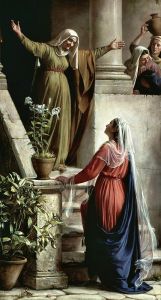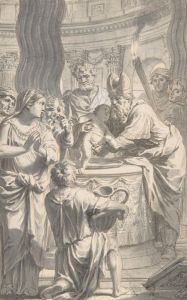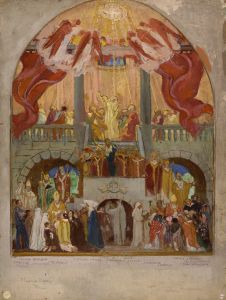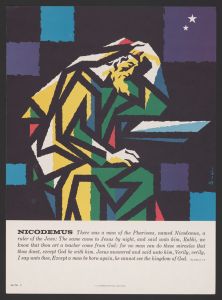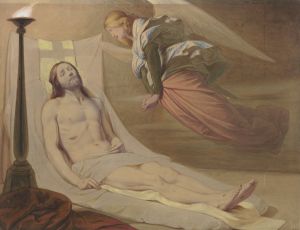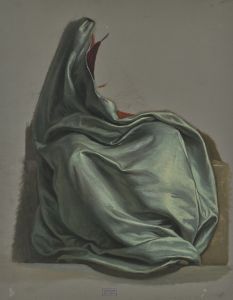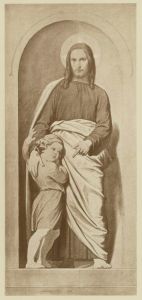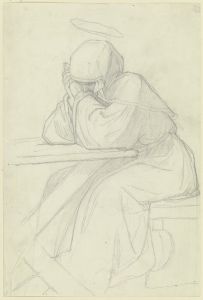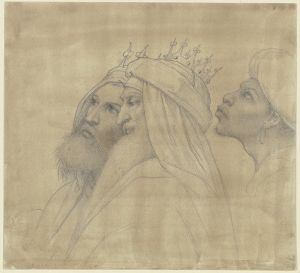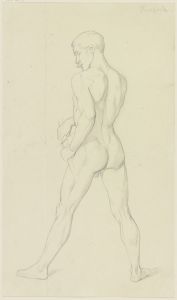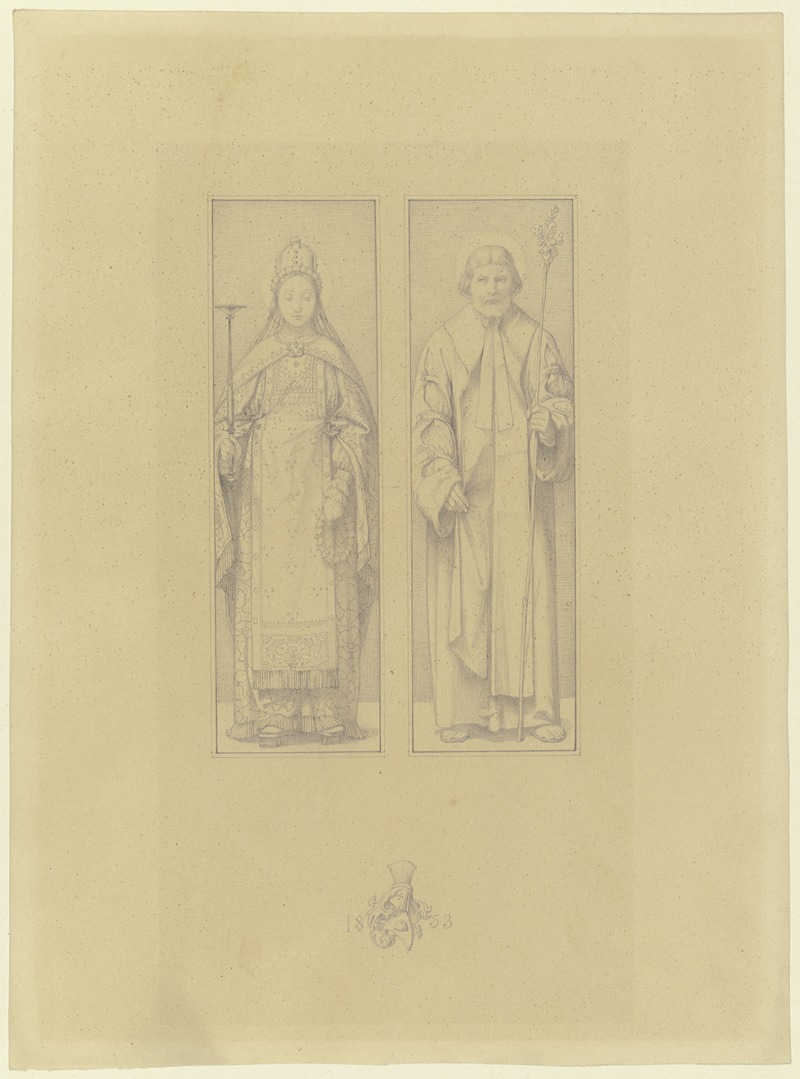
Maria und Joseph, ganze Figuren nebeneinander
A hand-painted replica of Eduard von Steinle’s masterpiece Maria und Joseph, ganze Figuren nebeneinander, meticulously crafted by professional artists to capture the true essence of the original. Each piece is created with museum-quality canvas and rare mineral pigments, carefully painted by experienced artists with delicate brushstrokes and rich, layered colors to perfectly recreate the texture of the original artwork. Unlike machine-printed reproductions, this hand-painted version brings the painting to life, infused with the artist’s emotions and skill in every stroke. Whether for personal collection or home decoration, it instantly elevates the artistic atmosphere of any space.
Eduard von Steinle was a notable 19th-century German painter, recognized for his contributions to the Nazarene movement, which sought to revive honesty and spirituality in Christian art. One of his works, "Maria und Joseph, ganze Figuren nebeneinander" (Mary and Joseph, full figures side by side), exemplifies his dedication to religious themes and his meticulous attention to detail.
Eduard von Steinle was born on July 2, 1810, in Vienna, Austria, and he became a prominent figure in the art world during his lifetime. He studied at the Academy of Fine Arts in Vienna and later moved to Rome, where he became associated with the Nazarene movement. This group of artists aimed to return to the purity and simplicity of early Renaissance art, drawing inspiration from medieval and early Renaissance religious paintings.
"Maria und Joseph, ganze Figuren nebeneinander" is a testament to Steinle's commitment to this artistic philosophy. The painting depicts the Virgin Mary and Saint Joseph standing side by side, both rendered in full figures. Steinle's use of color, composition, and attention to detail reflect his deep reverence for his subjects and his desire to convey their spiritual significance.
In this work, Steinle portrays Mary and Joseph with a sense of calm and dignity. Mary is often depicted wearing traditional blue and red garments, symbolizing her purity and her role as the mother of Jesus. Joseph, typically shown in more subdued colors, is portrayed as a protective and supportive figure. The artist's careful rendering of their facial expressions and body language conveys a sense of serenity and devotion.
Steinle's painting is characterized by its clear lines and harmonious composition, typical of the Nazarene style. The figures are set against a simple background, allowing the viewer to focus on their expressions and gestures. This simplicity and clarity are hallmarks of Steinle's work and reflect his commitment to the ideals of the Nazarene movement.
Throughout his career, Eduard von Steinle created numerous religious paintings, frescoes, and illustrations. His work was highly regarded for its spiritual depth and technical skill. He was also a professor at the Städelschule in Frankfurt, where he influenced a new generation of artists.
"Maria und Joseph, ganze Figuren nebeneinander" is a fine example of Steinle's ability to convey religious themes with sincerity and artistic excellence. His dedication to the Nazarene principles and his skillful execution make this painting a significant piece in the history of 19th-century religious art.
Eduard von Steinle passed away on September 19, 1886, in Frankfurt, Germany. His legacy lives on through his numerous works, which continue to inspire and move viewers with their spiritual and artistic qualities. "Maria und Joseph, ganze Figuren nebeneinander" remains a testament to his talent and his devotion to religious art.







